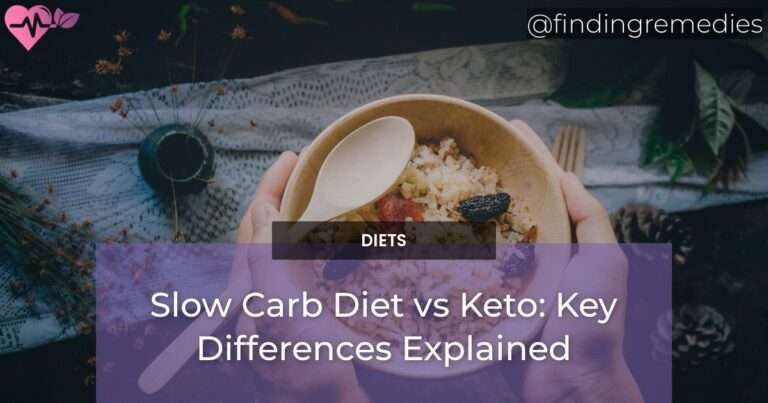The Slow Carb Diet and the Keto Diet are two popular dieting approaches that have gained significant attention in recent years. While both diets focus on weight loss and improved health, there are key differences between the two that individuals should consider when deciding which approach is best for them.
In this article, we look at the key differences between slow carb vs keto diet.
Table of Contents
Carb Intake
Slow Carb – Higher carbs than keto
The Slow Carb Diet allows for a higher carbohydrate intake compared to the Keto Diet. Slow Carb emphasizes consuming slow-digesting carbohydrates such as legumes, which provide sustained energy throughout the day. This approach allows individuals to enjoy a wider variety of foods while still promoting weight loss.
Keto – Very low carb
On the other hand, the Keto Diet promotes very low carbohydrate intake. This forces the body into a state of ketosis, where it primarily uses fat for fuel instead of carbohydrates. By severely limiting carb intake, the Keto Diet aims to quickly deplete glycogen stores and transition the body into a fat-burning mode.
ALSO READ
Food Choices
Slow Carb – Allows legumes
One notable difference between the two diets is the inclusion of legumes. The Slow Carb Diet allows for the consumption of legumes such as lentils and beans. Legumes are an excellent source of protein and fiber, making them a valuable addition to a well-rounded diet.
Keto – Restricts legumes
On the contrary, the Keto Diet restricts legume consumption due to their higher carbohydrate content. Legumes are typically higher in carbs compared to other protein sources, which can interfere with ketosis. Individuals following the Keto Diet focus on consuming higher-fat foods such as avocados and nuts.
Intermittent Fasting
Slow Carb – Optional but encouraged
Intermittent fasting, a pattern of eating that alternates between fasting and eating periods, is optional but encouraged on the Slow Carb Diet. Many individuals find that incorporating intermittent fasting can further enhance weight loss and improve overall health.
Keto – Encouraged
In contrast, intermittent fasting is highly encouraged on the Keto Diet. By combining the state of ketosis with intermittent fasting, individuals may experience increased fat burning and improved insulin sensitivity.
Fat Loss Outcomes Comparison
Both the Slow Carb Diet and the Keto Diet can lead to significant fat loss when followed properly. However, the rate and extent of weight loss may differ between the two due to variations in carb intake and metabolic responses.
Effect on Metabolism and Hunger
The Slow Carb Diet and the Keto Diet have distinct effects on metabolism and hunger levels. Slow Carb, with its moderate carbohydrate intake, provides a more sustainable approach that may help regulate hunger and energy levels throughout the day.
On the other hand, the Keto Diet’s low carbohydrate intake triggers changes in the body’s metabolism, promoting increased fat burning. Some individuals on the Keto Diet report reduced hunger due to the satiating effects of fat-rich foods.
Overall, the Slow Carb Diet and the Keto Diet offer different approaches to achieving weight loss and improved health. While the Slow Carb Diet allows for a higher carbohydrate intake and includes legumes, the Keto Diet focuses on very low carb consumption and emphasizes higher fat intake. Both diets can be effective, and individuals should choose the approach that aligns with their goals and preferences.

